Why Personalization Matters in Sales Proposals
Learn how tailoring your proposals to each client's needs can build trust, boost conversions, and drive higher sales.
— Propoze
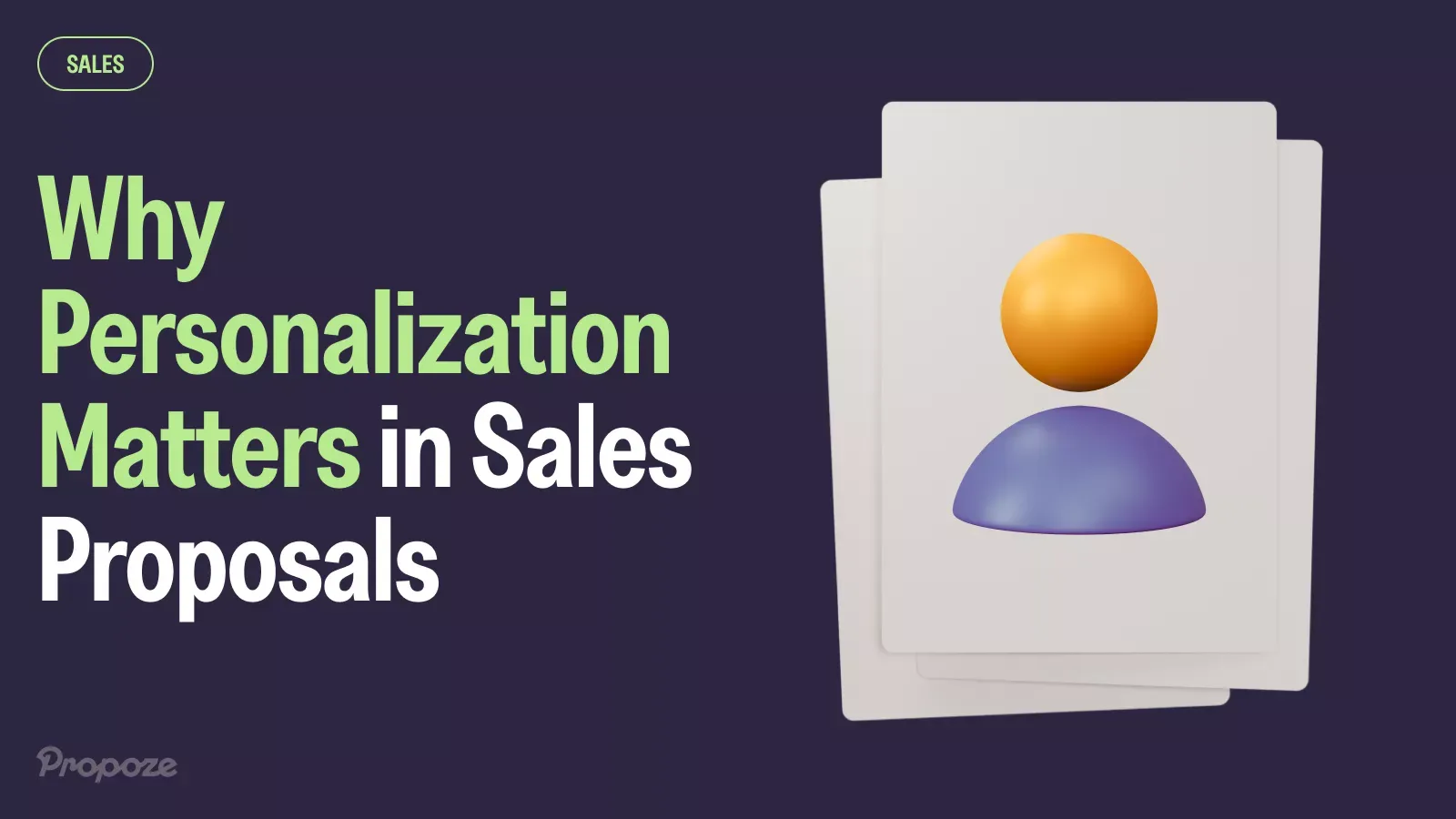
Personalized sales proposals are a powerful tool that can make or break your success in today's competitive market. By tailoring your proposals to meet the specific needs and preferences of each client, you're not only building trust but also significantly increasing your chances of closing the deal.
In this post, we'll explore why personalization matters in sales proposals and how you can leverage it to stand out and win more business.
Understanding your target market
Understanding your target market is crucial when creating a product proposal. It’s essential to identify your ideal customer, their needs, and pain points. This information will help you tailor your proposal to resonate with your target audience and increase the chances of securing funding or approval.
To understand your target market, conduct market research to gather data on demographics, psychographics, and behavior patterns. Analyze your competitors and identify gaps in the market that your product can fill. Use this information to create buyer personas that will guide your proposal’s content and design.
A well-crafted product proposal should demonstrate a deep understanding of the target market and how the product meets their needs.
By showing that you’ve done your research and understand your audience, you’ll build credibility and trust with your stakeholders.
How personalization builds trust and increases conversions
Personalization in sales proposals is a key factor in building trust with potential clients, which directly leads to higher conversion rates. Understanding the target audience is a key aspect of developing a successful marketing strategy, which should be reflected in your personalized proposals.
When you tailor a proposal to address a client’s specific needs, challenges, and goals, you demonstrate that you’ve taken the time to understand their unique situation. This personalized approach makes the client feel valued and understood, which fosters trust — a crucial element in any business relationship.
Trust, in turn, increases the likelihood of the client choosing your solution over others, as they perceive your offering as more aligned with their needs, ultimately boosting conversion rates.
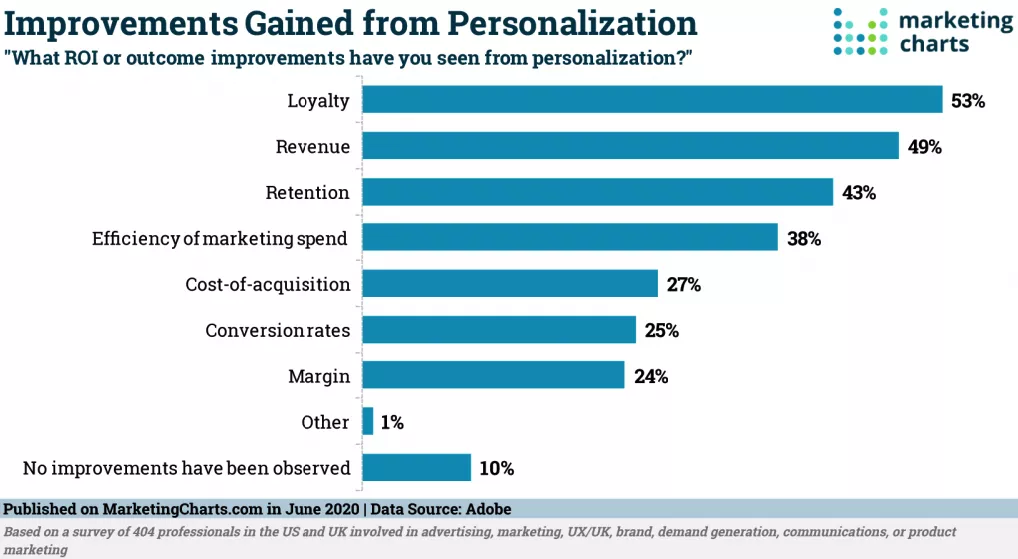
Common mistakes in sales proposal personalization (and how to avoid them)
Customizing sales proposals is a powerful way to connect with clients, but there are common pitfalls that can reduce their effectiveness.
Here's how to avoid these mistakes and create proposals that stand out.
2️⃣ Overloading with information — Bombarding the client with too much detail can dilute your message. Focus on the key points that matter most to the client. Use bullet points or short sections to keep the proposal easy to digest.
3️⃣ Ignoring the buyer’s journey — A one-size-fits-all proposal might miss the mark. Align your proposal with where the client is in their decision-making process. If they're early in the process, focus on education. If they're ready to buy, emphasize the ROI.
4️⃣ Neglecting client research — Without proper research, your proposal may lack relevance. Invest time in understanding the client's business, industry trends, and competition. Include personalized insights and recommendations based on this research.
5️⃣ Using a stale template —Over-reliance on a template can make your proposal feel uninspired. Customize each section with fresh, relevant content. Consider adding visuals or interactive elements to make it more engaging.
6️⃣ Weak value proposition — If your proposal doesn't clearly explain the benefits, you'll lose the client's interest. Articulate how your solution addresses the client's pain points. Use specific examples or metrics to back up your claims.
7️⃣ Inconsistent messaging —Misalignment between the proposal and other client communications can cause confusion. Ensure consistency in tone, messaging, and branding across all client touchpoints. Double-check for alignment with previous discussions.
8️⃣ Lack of follow-up strategy — Without a clear follow-up plan, your proposal might fall flat. End with a strong call-to-action and outline the next steps. Schedule a follow-up meeting or call to discuss the proposal further.
By taking these steps, you'll not only avoid common mistakes but also create proposals that truly resonate with your clients, increasing your chances of closing the deal.
Now, let's go a bit deeper into strategies for personalizing your sales proposal. We've just listed several of them, but let's attach an example and some more instructions to each.
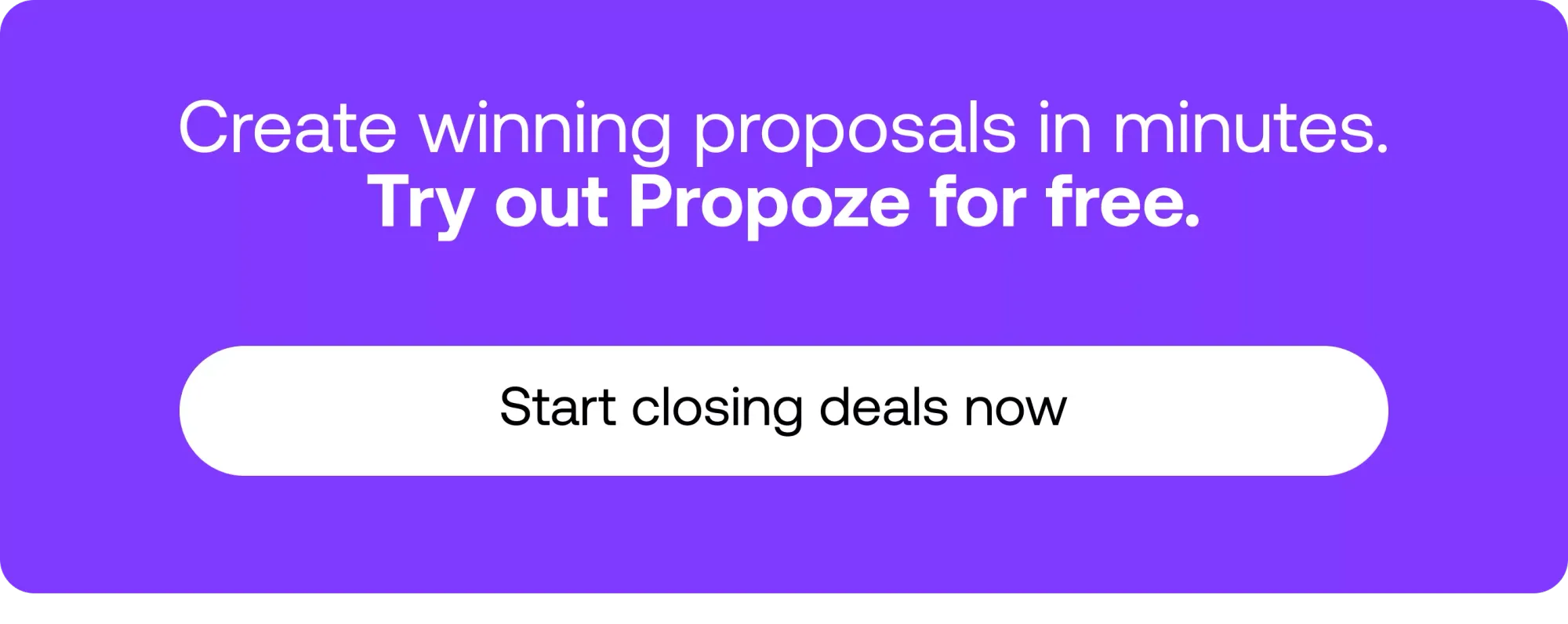
Crafting a compelling product proposal
A compelling product proposal is one that effectively communicates the value of your product and resonates with your target audience. To craft a winning product proposal, start by defining the problem you’re trying to solve and the opportunity for growth or improvement.
Clearly articulate your proposed solution, including its features, benefits, and unique selling points.
Use a custom proposal template to organize your content and make it visually appealing. Include market analysis, technical details, and customer feedback to build a strong case for your product. Make sure to highlight your competitive pricing strategy and how it will help you stand out in the market.
A well-crafted product proposal should also include a clear call-to-action, outlining the next steps and how stakeholders can get involved. By making it easy for stakeholders to take action, you’ll increase the chances of securing funding or approval.
8 effective strategies for sales proposal customization (+ bonus)
Customizing sales proposals effectively is key to winning more business and building stronger client relationships.
Here are some strategies to ensure your proposals hit the mark:
1) Avoid using generic content
A generic proposal suggests to the client that you haven’t taken the time to understand their specific needs. This can make your proposal feel like just another pitch rather than a tailored solution to their problem.
How to do it:
- Deep dive into client research: Start by understanding the client’s industry, competitors, challenges, and goals. Use tools like LinkedIn, industry reports, and even the client’s own website to gather insights.
- Custom messaging: Reflect your understanding in the proposal by mentioning specific pain points and how your solution addresses them. Use language that resonates with the client’s values and objectives.
- Use market data: Incorporate relevant market data to support your claims and demonstrate your understanding of the client's industry and market conditions. Visualize this data using engaging techniques like line graphs and bar charts to make your insights clearer and more accessible.
- Example: Instead of saying, “Our product increases efficiency,” say, “Our solution will help reduce your production costs by 15%, addressing the current challenge you face in scaling your operations.”
2) Manage market research information overload
Clients are busy and don't have time to sift through pages of irrelevant information. Overloading them with details can obscure your key message and reduce the impact of your proposal.
How to do it:
- Prioritize content: Start with an executive summary that highlights the main benefits and outcomes. Follow up with concise sections that address specific client needs.
- Use visuals: Incorporate charts, graphs, and infographics to convey complex information in an easily digestible format.
- Example: A visual breakdown of ROI over the first year can quickly communicate financial benefits, making it easier for the client to grasp the proposal's value.
3) Align with your buyer’s journey
A proposal that doesn’t align with where the client is in their decision-making process can feel out of sync and miss the mark.
How to do it:
- Identify the stage: Determine if the client is in the awareness, consideration, or decision stage of the buying process. Tailor your proposal's depth and focus accordingly.
- Stage-specific content: For clients in the awareness stage, focus on educating them about the problem and your solution. For those ready to make a decision, provide detailed ROI analysis and case studies.
- Example: A client in the consideration stage might benefit more from a comparison of your solution versus competitors, rather than an in-depth explanation of industry challenges.
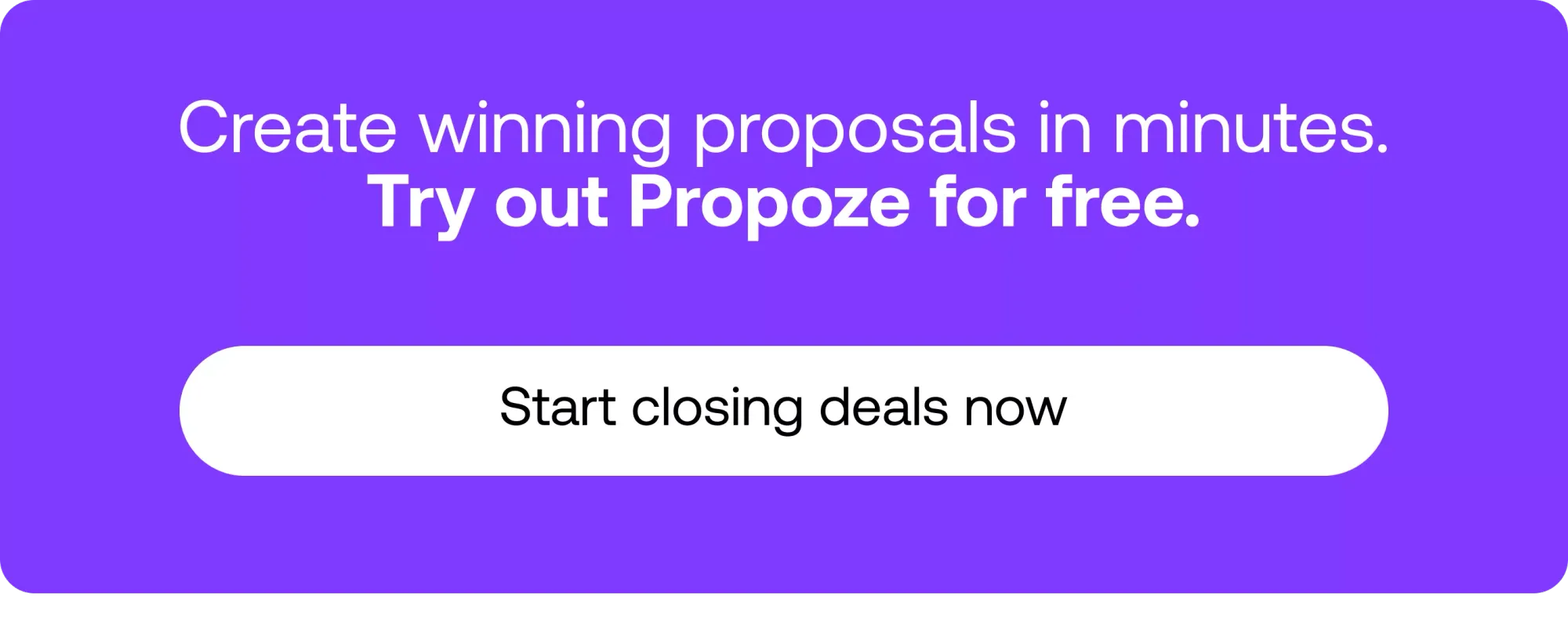
4) Leverage all the data you have
Using data to personalize proposals ensures that your recommendations are not just relevant but also backed by insights that demonstrate your understanding of the client’s specific needs. Using a product proposal template can help you organize and present this data effectively, making your proposal more compelling.
How to do it:
- Utilize CRM data: Use customer relationship management (CRM) software to gather data on past interactions, preferences, and purchase history. Integrate these insights into your proposal.
- Behavioral insights: If available, use data from website interactions, email opens, and content downloads to tailor your proposal to what the client is most interested in.
- Example: If a client frequently engages with content on cost reduction, emphasize the cost-saving aspects of your solution in the proposal.
Here’s a quick guide on how to start with a CRM and get the most out of your data.
5) Go beyond the template
While templates are a great starting point, over-reliance on them can make your proposals feel cookie-cutter and uninspired.
How to do it:
- Template as a framework: Use templates as a structural guide but ensure that the content within each section is customized. Regularly update templates to include new insights and innovations.
- Add interactive elements: Consider including interactive elements like clickable links, videos, or embedded calculators that engage the client more deeply.
- Example: Instead of a static “About Us” section, embed a short video that introduces your team and showcases your company culture.
6) Strengthen your value proposition
A strong value proposition is the core of your proposal—it’s what convinces the client that your solution is the best fit.
How to do it:
- Quantify benefits: Wherever possible, use metrics to quantify the benefits. For example, “Our solution will reduce your operating costs by 20% within the first six months.”
- Address pain points directly: Don’t just list features—explain how each feature directly addresses a specific pain point the client has.
- Example: Instead of “Our software has a user-friendly interface,” say, “Our software’s user-friendly interface will reduce your team’s onboarding time by 30%, allowing you to start seeing benefits sooner.”

7) Ensure your messaging is consistent
Inconsistencies can lead to confusion and undermine the credibility of your proposal.
How to do it:
- Unified brand voice: Make sure that the tone and messaging in your proposal align with your overall brand voice and previous communications with the client.
- Review process: Implement a review process where team members cross-check the proposal with past communications to ensure consistency.
- Example: If your initial pitch emphasized innovation, ensure that your proposal highlights the innovative aspects of your solution throughout.
8) Create a follow-up strategy
Without a clear next step, your proposal may leave the client uncertain about how to proceed, potentially delaying the decision-making process.
How to do it:
- End with a CTA: Always conclude your proposal with a clear call-to-action, whether it’s scheduling a follow-up meeting, signing an agreement, or another specific next step.
- Outline the process: Include a brief roadmap of what happens next if they choose to proceed. This could include implementation timelines, key contacts, and milestones.
- Example: “We’re excited to take the next step with you. Let’s schedule a call next week to discuss any questions you have and finalize our partnership.”
Visit our complete guide to following up after sending a sales proposal! You’ll find it extremely useful.
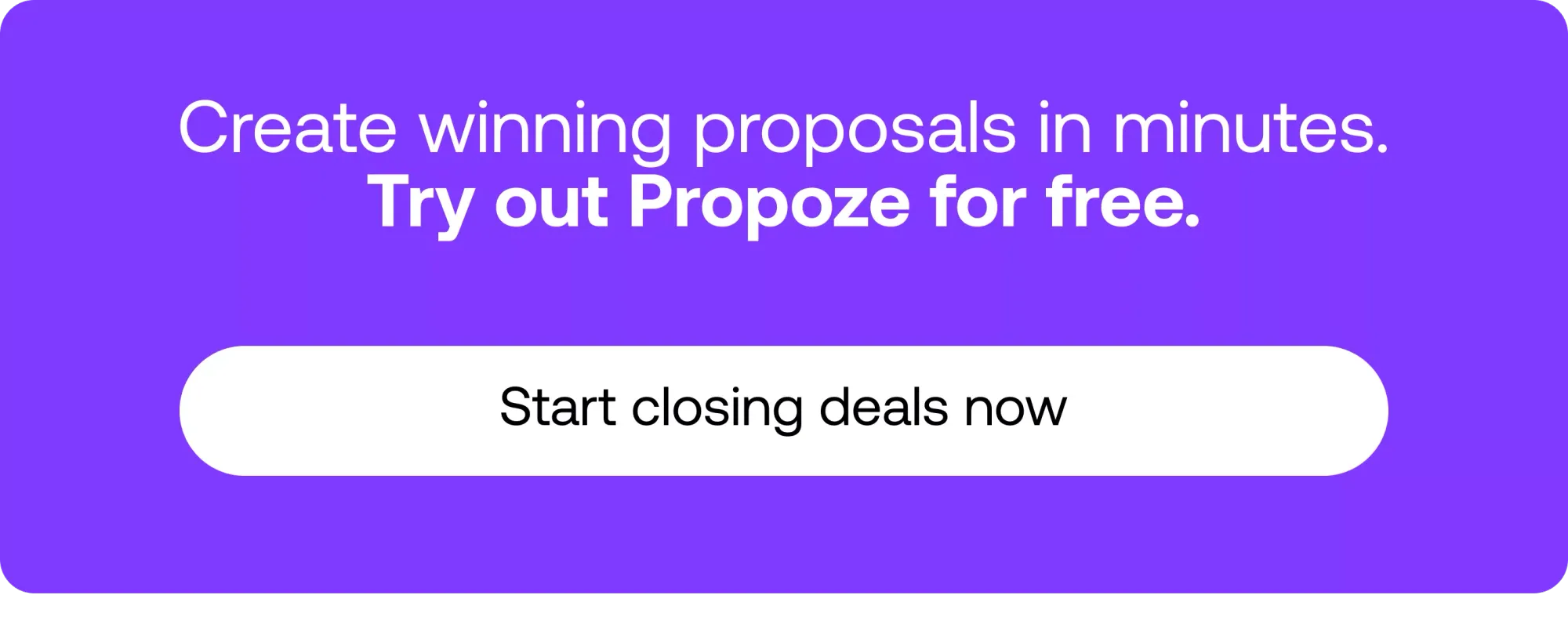
Bonus: Creating a customization checklist
To ensure consistent quality across all proposals, create a checklist that includes steps like:
- Conducting client research
- Tailoring messaging to specific pain points
- Ensuring alignment with the buyer’s journey
- Reviewing for consistency and accuracy
This checklist can serve as a reliable guide for you and your team, helping maintain a high standard for every proposal you create.
By implementing all these strategies, you’ll create sales proposals that resonate more deeply with clients, increasing your chances of securing their business. Customization is not just about adding a personal touch—it’s about strategically aligning your proposal with what matters most to the client.
5 best tools for creating personalized sales proposals
Personalizing sales proposals effectively requires the right tools that streamline the process while allowing for deep customization. Here are some of the best tools:
- Propoze: Propoze offers powerful features for creating and customizing proposals tailored to each client's specific needs. Customize fonts, colors, layouts, and everything else you need to confidently reach your client.
- Proposify: This tool offers customizable templates and drag-and-drop functionality, making it easy to tailor each proposal to specific client needs. It also includes features for tracking proposal views and interactions.
- PandaDoc: PandaDoc provides robust features for document automation, allowing you to create highly personalized proposals with ease. Its integration with CRMs ensures that client data flows seamlessly into your proposals.
- Qwilr: Qwilr transforms proposals into interactive web pages, offering a modern and engaging way to present personalized content. It also includes analytics to track how clients interact with your proposals.
- Nusii: Nusii is tailored for creative agencies and freelancers, offering an intuitive interface for creating personalized proposals quickly. It also provides metrics on proposal performance to help you refine your approach.
These tools simplify the process of creating personalized proposals, enhancing your ability to deliver content that resonates with each client, ultimately improving your chances of closing the deal.
Making it interactive
Making your proposal interactive is a great way to engage stakeholders and increase the chances of securing funding or approval. Use interactive elements, such as links, hover effects, and pop-ups, to make your proposal more dynamic and engaging.
Consider adding a video or animation to your proposal to illustrate key points and make it more memorable. You can also include interactive charts and graphs that allow stakeholders to explore the data in more detail.
By making your proposal interactive, you’ll increase stakeholder engagement and make it more likely that they’ll take action. Use a proposal template that includes interactive elements to make your proposal stand out.
Applying your branding
Applying your branding to your proposal is essential to building credibility and trust with stakeholders. Use a proposal template that includes your company’s visual style guide, including your logo, color scheme, and font.
Make sure to customize your proposal to fit your brand’s tone and voice. Use language that is consistent with your brand’s messaging and avoid using jargon or technical terms that may be unfamiliar to stakeholders.
By applying your branding to your proposal, you’ll build credibility and trust with stakeholders and increase the chances of securing funding or approval. Use a proposal template that includes your branding to make your proposal more professional and polished.
How to measure the impact of personalized sales proposals
Let’s dive deeper into how you can really measure the impact of personalized sales proposals, making sure every effort you put into customization is delivering results.
1) Conversion rates
Start by comparing how many of your personalized proposals are turning into closed deals versus your generic ones. This isn't just about numbers—look for patterns.
Are certain types of personalization (like focusing on specific pain points) more successful than others? This can guide where to focus your efforts.
2) Engagement metrics
Start by comparing how many of your personalized proposals are turning into closed deals versus your generic ones. This isn't just about numbers—look for patterns.
Are certain types of personalization (like focusing on specific pain points) more successful than others? This can guide where to focus your efforts.
3) Client feedback
Gathering direct feedback from your clients about the proposal can be a goldmine.
Ask specific questions — did they find the proposal relevant to their needs? Was there any part that didn't resonate? This not only helps in refining future proposals but also strengthens your client relationships by showing that you value their input.
4) Sales cycle duration
Take a close look at whether your personalized proposals are shortening the sales cycle.
When clients see that you truly understand their needs, they're more likely to make quicker decisions. Analyze your timelines and identify if there's a noticeable difference when personalization is involved.
5) ROI analysis
Finally, it's crucial to evaluate whether the time and resources you're investing in personalization are paying off. This isn't just about comparing costs with revenue — it's about understanding the bigger picture.
Are personalized proposals leading to larger deals or more long-term contracts? If so, your personalization strategy is contributing to sustainable growth, not just quick wins.
Start creating proposals with Propoze
Throughout this blog post, we've explored why personalized sales proposals are essential for building stronger client relationships and driving better results.
Personalization isn't just about adding a name; it's about tailoring your proposals to meet the unique needs of each client, leading to higher conversions, shorter sales cycles, and improved ROI. By focusing on what matters most to your clients, you can create proposals that truly stand out.
Ready to transform your proposals? Try Propoze for free and start closing more deals with personalized, impactful proposals.